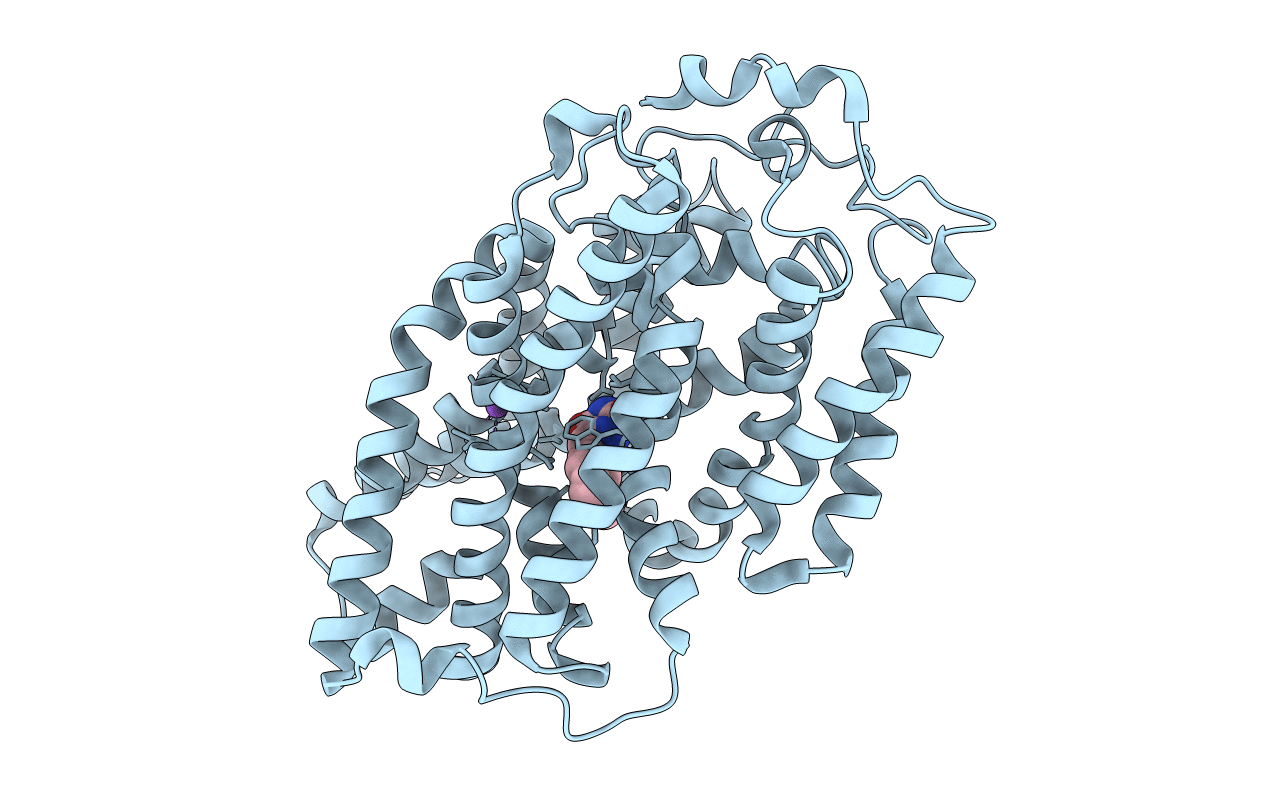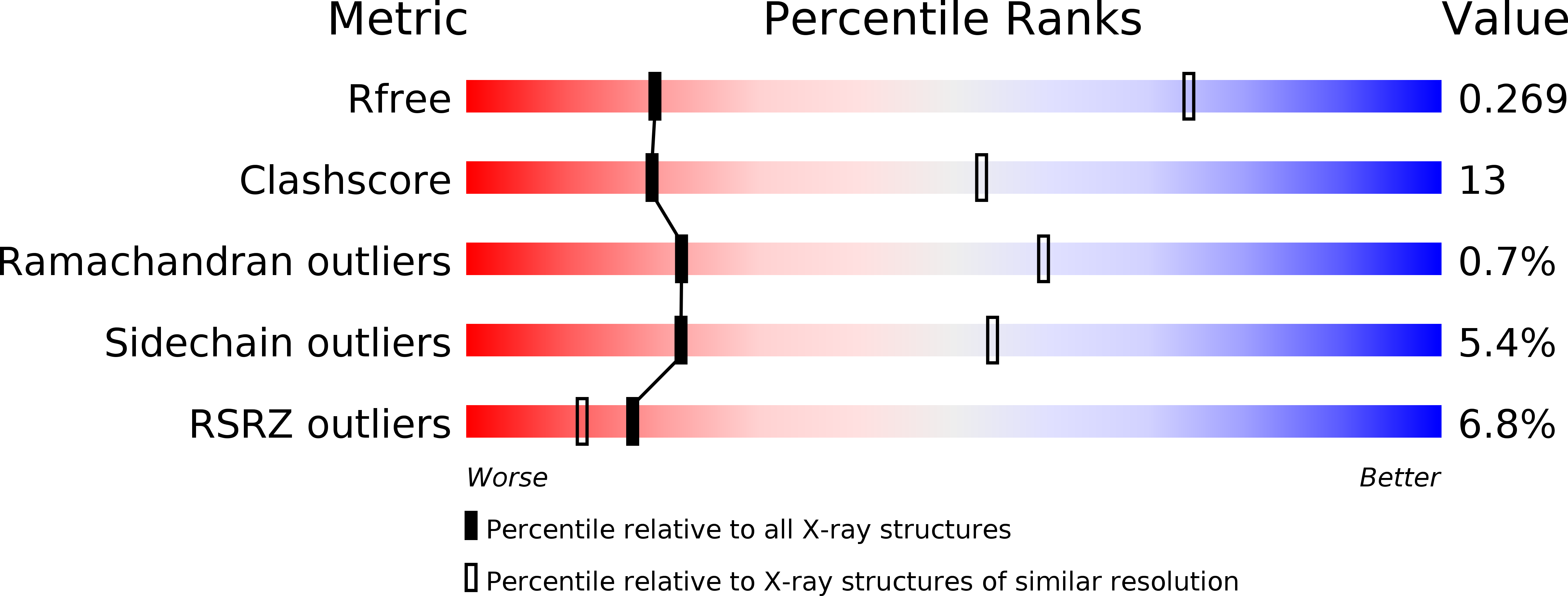
Deposition Date
2014-05-01
Release Date
2014-07-02
Last Version Date
2023-12-20
Entry Detail
PDB ID:
4D1D
Keywords:
Title:
STRUCTURE OF MHP1, A NUCLEOBASE-CATION-SYMPORT-1 FAMILY TRANSPORTER with the inhibitor 5-(2-naphthylmethyl)-L-hydantoin.
Biological Source:
Source Organism:
MICROBACTERIUM LIQUEFACIENS (Taxon ID: 33918)
Host Organism:
Method Details:
Experimental Method:
Resolution:
3.70 Å
R-Value Free:
0.30
R-Value Work:
0.25
R-Value Observed:
0.26
Space Group:
P 21 21 21


